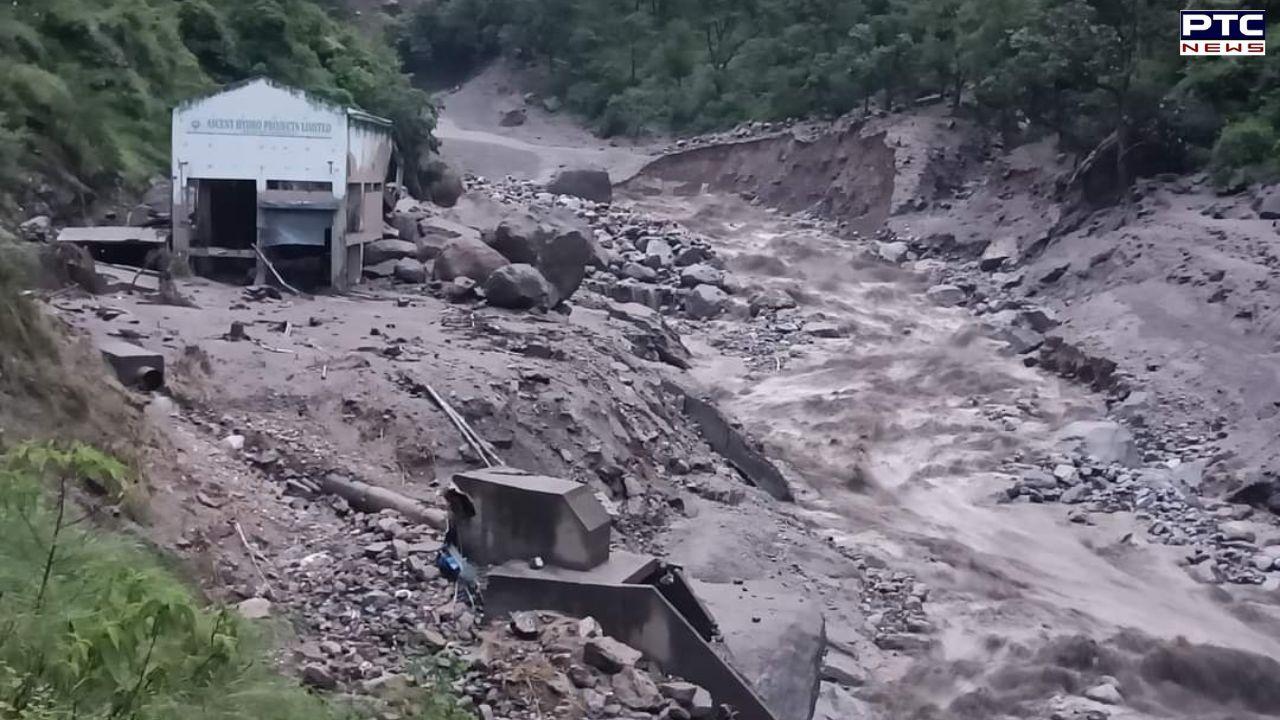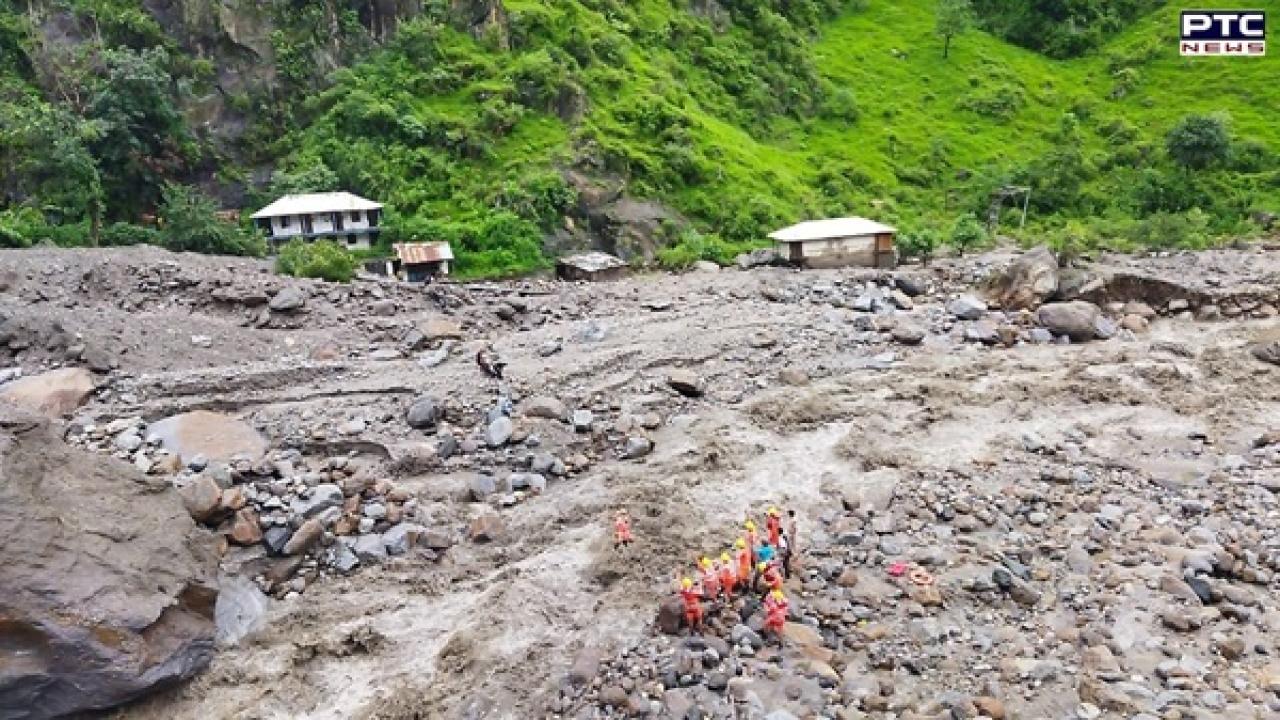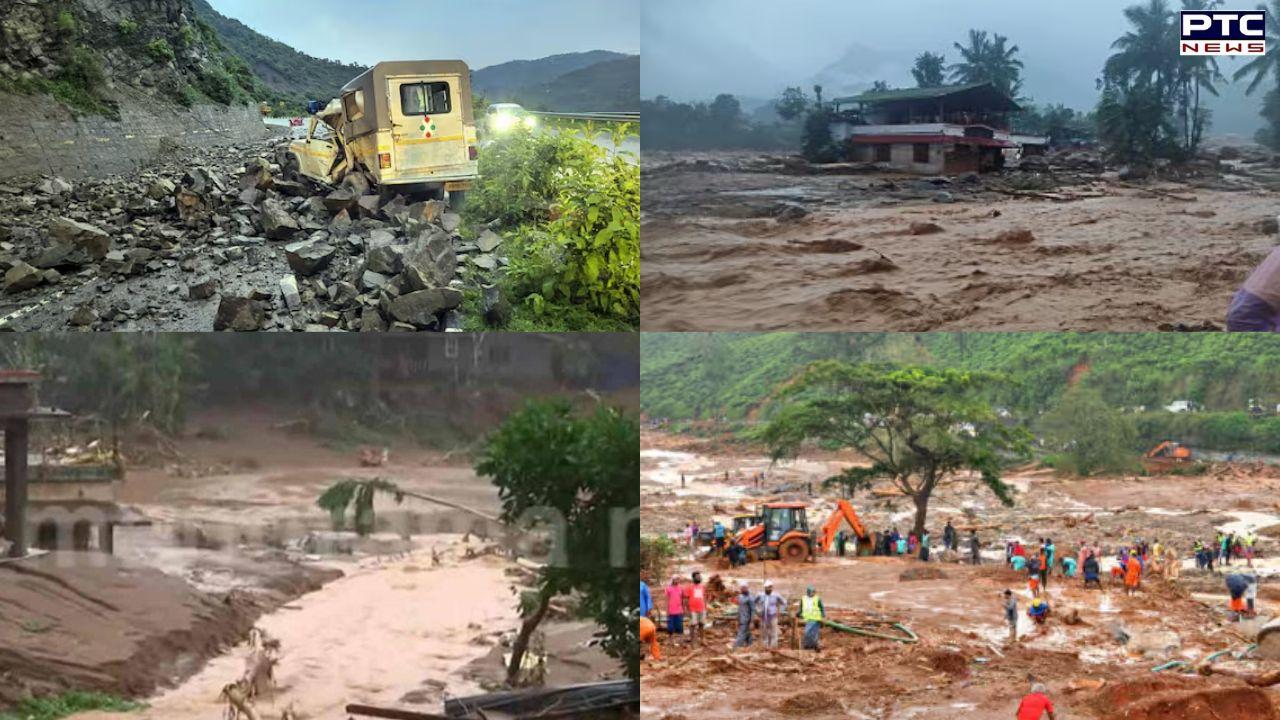- March 31, 2025
- Updated 2:22 am
Landslides: Reasons behind devastating landslips in Kerala and Himachal and major tragedies in past
On the night of July 29, a sudden and loud landslide struck Kerala’s Wayanad, causing rocks and earth to collapse and debris to come down. Several villages were severely affected, resulting in the destruction of homes, bridges, roads, and vehicles. Tragically, 267 people have been confirmed dead in Wayanad landslides, and many are still missing.
On the other hand, on Thursday, Himachal Pradesh’s Kullu and Mandi districts witnessed a massive destruction following a landslide triggered by heavy rain and a cloudburst. Several homes were destroyed. As of the time of filig this news, two deaths had been reported with 51 others missing.

What caused these landslides in Wayanad and Kullu
A landslide is the movement of rock, earth, or debris down a slope. Scientifically, it is referred to as down-slope movement. The force of gravity causes the ground or rock to lose its ability to hold its weight, leading to collapse, sliding, or flowing. This often occurs as a muddy spread, known as debris. In Kerala, heavy rainfall caused water and debris to flow down from the mountains, resulting in a landslide.
Landslides occur due to the movement of layers of earth beneath the surface. They are typically caused by four factors: weight, angle, geographic conditions, and external forces. These factors exert pressure on the internal strength of the soil, leading it to lose its grip and cause a landslide.

Despite Himachal being in the northern part of the country and Kerala in the southern part, both experienced similar types of landslides in mountainous areas due to heavy and continuous rainfall. The only difference is that Himachal has denser forest areas compared to Kerala. In both regions, the soil was under pressure from water, causing it to lose its grip.
Notably, water plays a crucial role in most landslides. It increases the weight on the soil, activating the landslide process. Hydrostatic pressure caused by water weakens the soil’s grip. Excessive water can result from natural or human causes such as rainfall, snowmelt, river erosion, dam failure, or broken pipelines.
In Kerela’s Wayanad, heavy rainfall was a significant immediate factor. According to the Indian Meteorological Department, Wayanad received 5.5 inches of rain in 24 hours between Monday and Tuesday, which is five times the normal amount for the district. Some areas received over 11 inches of rain in 24 hours.
Experts say different types of soil have varying capacities to withstand slope angles. The stability of a slope largely depends on the internal strength of the soil. Some soil slopes remain stable for years, while others may eventually lose their grip and cause landslides.

Early warning signs in Wayanad
Landslides do not always occur suddenly. Sometimes, a mountain may shift gradually, possibly by only a cm per year. In other cases, soil may suddenly lose its grip, causing immediate destruction, as seen in the Kedarnath tragedy. The speed of such landslides can reach up to 160 km/h.
In Wayanad, the landslide happened suddenly, but there were signs beforehand. The landslide, which occurred after midnight, did not give people enough time to react, resulting in significant loss of life.
Home Minister Amit Shah informed Parliament on Wednesday that the Kerala Government had been alerted on July 23-24. Had the government acted in time, the damage could have been minimized.
Experts say the simplest way to prevent landslides is to avoid construction in areas prone to them. If construction is necessary, surface water should be diverted away from slope areas. Reducing the load on slope angles and increasing plantation in heavy rainfall areas can also help prevent landslides.
Major landslides in the past
Kedarnath, Uttarakhand (2013): This landslide was caused by continuous heavy rain and flooding in the Himalayan state, resulting in over 5,700 deaths and the destruction of more than 4,200 villages.
Darjeeling, West Bengal (1968): On October 4, a landslide triggered by flooding cut the 60-km National Highway-91 in two. Over 1,000 persons died, and there was significant damage to property, infrastructure, and tea plantations.
Guwahati, Assam (1948): In September, heavy rains caused a massive landslide that buried an entire village, killing over 500 persons.
Mapla Village, Undivided Uttar Pradesh (1998): Continuous rain for seven days in August caused a landslide, resulting in over 380 deaths and the destruction of a village.
Malin village, Maharashtra (2014): A landslide triggered by heavy rain on July 30 killed 151 persons, with over 100 missing.
Recent Posts
- Crown of goddess Kali, gifted by PM Modi, stolen from temple in Bangladesh
- Hezbollah leader survives assassination attempt amid Israeli strikes that kill 22 in Beirut
- ਕ੍ਰਿਕਟ ਦੇ ਬਦਲੇ ਨਿਯਮ, ਹੁਣ ਇਸ ਕੇਸ ‘ਚ ਦੁਬਾਰਾ ਨਹੀਂ ਮਿਲੇਗੀ ਬੈਟਿੰਗ, ਮੰਨਿਆ ਜਾਵੇਗਾ
- ਸਚਿਨ ਤੇਂਦੁਲਕਰ ਦੇ ਬਰਾਬਰ ਪਹੁੰਚੇ ਜੋ ਰੂਟ, ਪਰ ਵਿਰਾਟ ਦੇ ਇਸ ਰਿਕਾਰਡ ਤੋਂ ਅਜੇ ਵੀ ਦੂਰ
- Ratan tata death: ਸਿਰਫ ਵੋਲਟਾਸ ਹੀ ਨਹੀਂ, ਸਵੇਰ ਤੋਂ ਰਾਤ ਤੱਕ ਤੁਹਾਡਾ ਕੰਮ ਟਾਟਾ ਦੇ ਬਿਨਾਂ ਨਹੀਂ ਚੱਲ ਸਕਦਾ